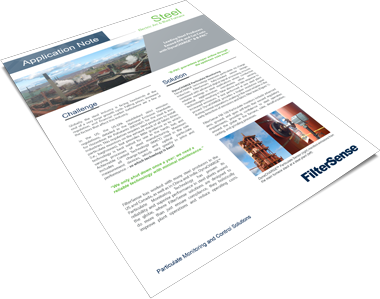Globally, the steel industry is facing headwinds at the end of a very large growth cycle. Falling prices, increased regulation, and financial market turbulence are a few of the factors that affect this industry.
In the US, the US-EPA established strict emission regulations, detailed in the National Emission Standards for Hazardous Air Pollutants (NESHAP) for the steel & iron Industries. This regulation requires steel producers to install particulate monitors on the exhaust stack of all fabric filters (i.e., baghouses), but provides little guidance as to which technology is best suited for use in the harsh, hot, and varying processes of steel manufacturing. Maximum Achievable Control Technology (MACT) cited in the rule includes all charge-based and optical particulate measurement devices, which vary greatly in price and performance – so which technology is best?
FilterSense has worked with many steel producers in the US and Canada, as well as in China and India. DynaCHARGE™ Particulate Monitoring Technology has proven its reliability and superior performance in steel plants around the globe, where FilterSense solutions are designed to do more than just ensure compliance, they holistically improve plant operations and reduce operating costs.

